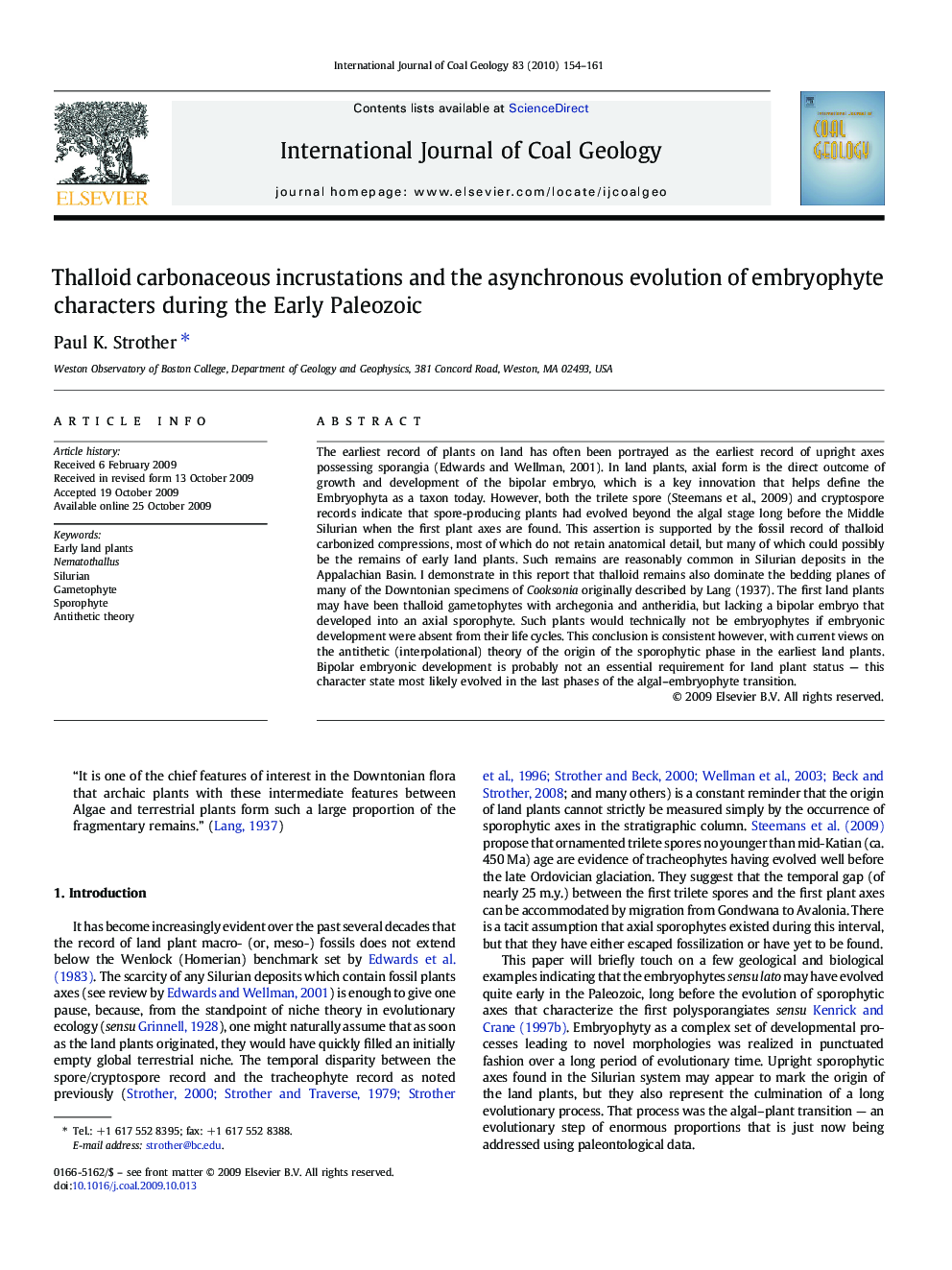| Article ID | Journal | Published Year | Pages | File Type |
|---|---|---|---|---|
| 1753623 | International Journal of Coal Geology | 2010 | 8 Pages |
The earliest record of plants on land has often been portrayed as the earliest record of upright axes possessing sporangia (Edwards and Wellman, 2001). In land plants, axial form is the direct outcome of growth and development of the bipolar embryo, which is a key innovation that helps define the Embryophyta as a taxon today. However, both the trilete spore (Steemans et al., 2009) and cryptospore records indicate that spore-producing plants had evolved beyond the algal stage long before the Middle Silurian when the first plant axes are found. This assertion is supported by the fossil record of thalloid carbonized compressions, most of which do not retain anatomical detail, but many of which could possibly be the remains of early land plants. Such remains are reasonably common in Silurian deposits in the Appalachian Basin. I demonstrate in this report that thalloid remains also dominate the bedding planes of many of the Downtonian specimens of Cooksonia originally described by Lang (1937). The first land plants may have been thalloid gametophytes with archegonia and antheridia, but lacking a bipolar embryo that developed into an axial sporophyte. Such plants would technically not be embryophytes if embryonic development were absent from their life cycles. This conclusion is consistent however, with current views on the antithetic (interpolational) theory of the origin of the sporophytic phase in the earliest land plants. Bipolar embryonic development is probably not an essential requirement for land plant status — this character state most likely evolved in the last phases of the algal–embryophyte transition.
